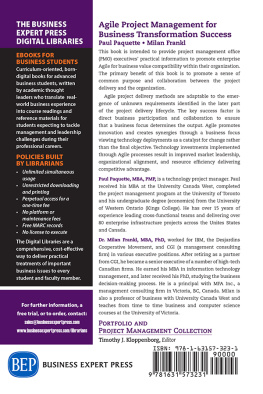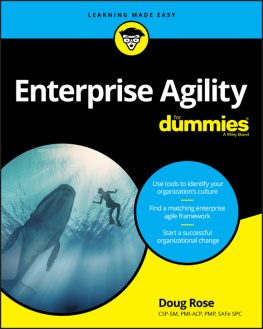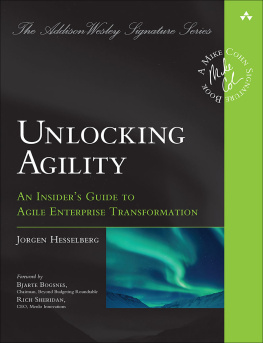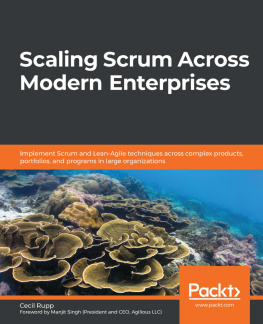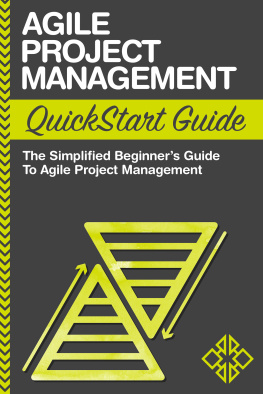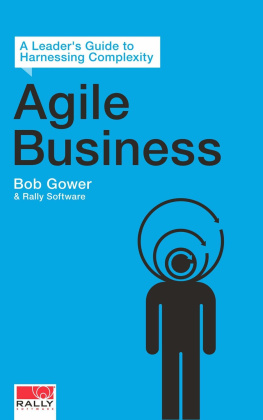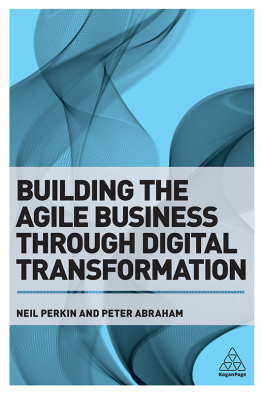Contents
About This eBook
ePUB is an open, industry-standard format for eBooks. However, support of ePUB and its many features varies across reading devices and applications. Use your device or app settings to customize the presentation to your liking. Settings that you can customize often include font, font size, single or double column, landscape or portrait mode, and figures that you can click or tap to enlarge. For additional information about the settings and features on your reading device or app, visit the device manufacturers Web site.
Many titles include programming code or configuration examples. To optimize the presentation of these elements, view the eBook in single-column, landscape mode and adjust the font size to the smallest setting. In addition to presenting code and configurations in the reflowable text format, we have included images of the code that mimic the presentation found in the print book; therefore, where the reflowable format may compromise the presentation of the code listing, you will see a Click here to view code image link. Click the link to view the print-fidelity code image. To return to the previous page viewed, click the Back button on your device or app.
Praise for Agile Transformation
Agile Transformation is a wonderful, very readable, and very important book. What makes virtually all other books on transformation, leadership, and business so inadequate is their partial, incomplete, and non-inclusive character. This is exactly the inadequacy handled by Agile Transformation through the use of Integral metatheory, a systemic framework built to be as comprehensive as possible. Thus, Agile Transformation is as inclusive as can be, and that is what makes this book so incredibly important. So if you are engaged in a transformation, I strongly recommend that you not continue to be fractured and broken in your own approach, but step up to the wholeness and completeness of Agile Transformation.
Ken Wilber, The Integral Vision
This book does not pull its punches. From the first page to the last, the Agile Transformation operating system works the simple and core truth about transforming an organizationit depends on you being transformed. There will be no Agile organizational transformation otherwise. There is much in this book that will help you learn about how to implement a successful Agile Transformation, but it is all for naught if you dont embody and lead the change. You are the vessel. It wont change unless you do. If youre serious about having your Agile Transformation succeed, read this book.
Bob Anderson, chairman, The Leadership Circle
Its difficult to keep your focus sharp while broadening your perspective, but that is what Michele and Michael have pulled off in their new book on leading Agile Transformation. Impressively succinct, they provide straightforward tools and essential advice that will be useful for all leaders of transformation initiatives. So how did they do it? Well, for one thing, rather than positioning traditional and Agile-inspired management viewpoints as locked in combat, as many of their predecessors have done, they show how they are equally important, complementary features of a single unifying framework. Just as important, they know what is imperative, what to simplify, and what to ignore, the kind of knowledge that can only be distilled from decades of experience.
Charlie Rudd, chairman and CEO, SolutionsIQ, an Accenture company
This is a must-read for any leader embarking on or in the midst of an Agile Transformation. Michele Madore and Michael Spayds integral approach provides organizations with tremendous insights into how to overcome the pitfalls of process-centric transformations that are all too common. They have done a brilliant job of making clear, relatable, and actionable what many see as the most nebulous aspects of leading transformation.
Shannon Ewan, managing director, ICAgile
Michele and Michael have written a beautiful book about change, intertwining their in-depth knowledge and vast experience with Agile Transformations. It gave me a vocabulary and understanding of the change territory, so now I have a way to navigate, too, and at the same time, it has nudged me gently to start exploring the same and go for my own development journey.
Zvonimir Durcevic, enterprise Agile coach
Agile Transformation
Agile Transformation
Using the Integral Agile Transformation Framework
to Think and Lead Differently
Michael K. Spayd
Michele Madore
Boston Columbus New York San Francisco Amsterdam Cape Town
Dubai London Madrid Milan Munich Paris Montreal Toronto Delhi Mexico City
So Paulo Sydney Hong Kong Seoul Singapore Taipei Tokyo
Many of the designations used by manufacturers and sellers to distinguish their products are claimed as trademarks. Where those designations appear in this book, and the publisher was aware of a trademark claim, the designations have been printed with initial capital letters or in all capitals.
The authors and publisher have taken care in the preparation of this book, but make no expressed or implied warranty of any kind and assume no responsibility for errors or omissions. No liability is assumed for incidental or consequential damages in connection with or arising out of the use of the information or programs contained herein.
For information about buying this title in bulk quantities, or for special sales opportunities (which may include electronic versions; custom cover designs; and content particular to your business, training goals, marketing focus, or branding interests), please contact our corporate sales department at or (800) 382-3419.
For government sales inquiries, please contact .
For questions about sales outside the U.S., please contact .
Visit us on the Web: informit.com/aw
Library of Congress Control Number: 2020946163
Copyright 2021 Pearson Education, Inc.
All rights reserved. This publication is protected by copyright, and permission must be obtained from the publisher prior to any prohibited reproduction, storage in a retrieval system, or transmission in any form or by any means, electronic, mechanical, photocopying, recording, or likewise. For information regarding permissions, request forms and the appropriate contacts within the Pearson Education Global Rights & Permissions Department, please visit www.pearson.com/permissions.
Cover image: Juha Sompinmaeki/Shutterstock
Page 14, : A Brief History of Everything, Ken Wilber 1996 Shambhala Publications, Inc.
Pages 27, 28: Photo of dog courtesy of Michael K. Spayd.
Page 27: Microscope illustration by Alemon cz/Shutterstock.
Page 28: Silhouette of dog by Naddya/Shutterstock.
Page 31, : About Integral Theory. All Quadrants: The Basic Dimension-Perspectives.
Integralacademy.eu/about/about-integral-theory/all-quadrants-the-basic-dimension-perspectives. Integral Academy 2002.
ISBN-13: 978-0-321-88531-9
ISBN-10: 0-321-88531-7
ScoutAutomatedPrintCode
Preface
In todays business world, Agile Transformations have become the norm. The journey from Agile as a means of software development to thinking of Agile as a means to achieve organizational agility has been trodden by many who have influenced and shaped the thinking in this space over the last two decades. The challenges, resistance, failures, and successes of many individuals and organizations have all contributed to the way in which we continue to learn and adjust course. When we come to recognize that we all play a part in making true agility possible for organizations, it is then that we will have a shared unified vision of a reimagined organizationwe will truly see, in the deepest way, where we are, where we want to go, and what is missing. This book is written from that deepest place within us: from our experiences, our passion and sometimes our loss of passion, our successes and our failures, our joys in achieving our purpose and our pain when that purpose is not realized, and, ultimately, our understanding of and seeing what is missing and what we believe is possible.


